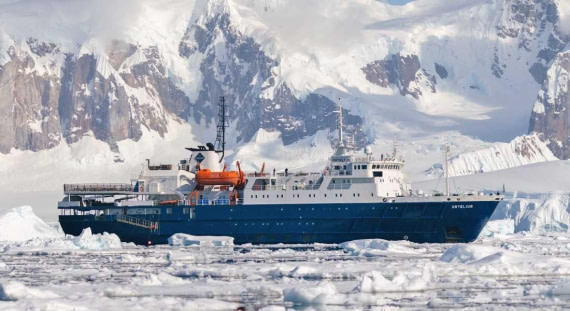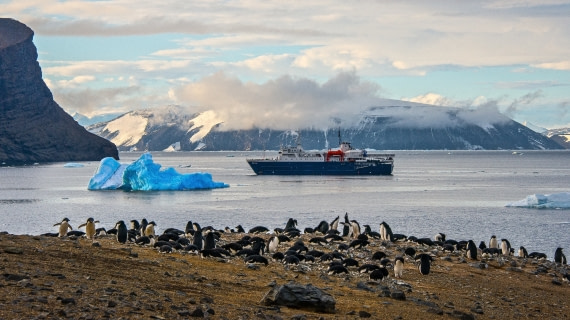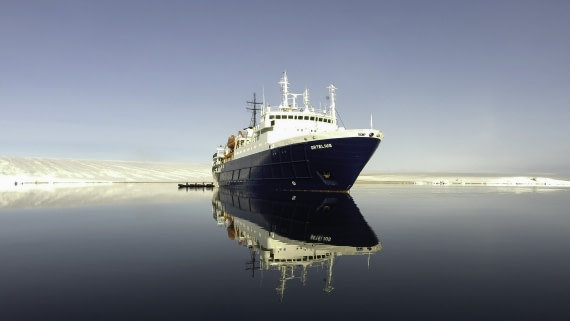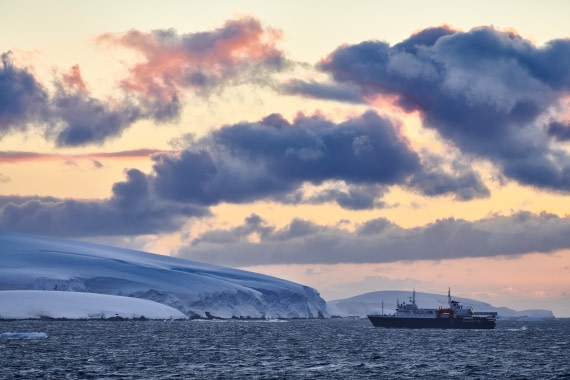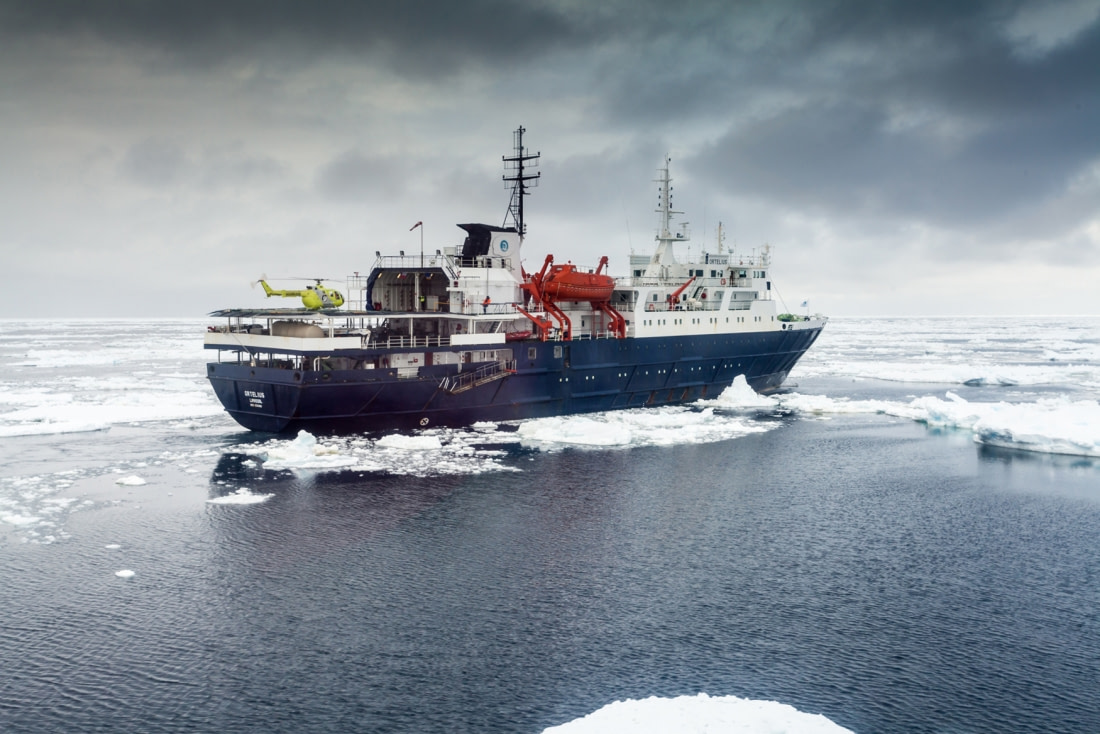| Date: |
04.09.2024 |
| Position: |
70°27.8’ N - 025°09.1’ W |
| Wind: |
E3 |
| Weather: |
Overcast |
| Air Temperature: |
+3 |
After a night sailing ‘outside’ at sea, with some movement to put us gently to sleep, we went into the biggest fjord of Greenland, Scoresby Sund, where the waves died down. The first hours the fog was still hiding the beauty of our new destination from today. Later, as the ‘white veil’ lifted, the majestic high peaks of the fjord came into view on the port side of the vessel, revealing a stunning landscape. We even spotted some blue sky and a lot of us were on deck to take photos of the amazing landscape that we’d just entered. In the far distance, but slowly but surely creeping closer, the first massive icebergs came into sight. The sun peaked through the clouds and shed a beautiful orange glow on the mountainsides and the ice. What a way to start this day.
We all went for breakfast at 08:00, while the captain and his team were approaching the anchorage site for this morning. Around 09:00 we dropped anchor, and the crew were lowering all eleven zodiacs onto the water. This morning, we were doing a full ship zodiac cruise into Vikingebugta with its magnificent glacier at the end. While we were waiting at the gangway the guides were in their zodiacs, scouting the vicinity for interesting objects. One of them spotted a polar bear in the bay north of Vikingebugta and of course, we decided to make a detour first and head right to the end of that bay. The bear was slowly moving on the dark moraine, so although it was a little further away it was easy to spot as it stood out with its yellowish fur. The ride in, and back to our original starting point of this cruise was already beautiful. We were surrounded by high peaks, some up to 15:00 meters, with different geological features, such as sedimentary layers and some waterfalls.
Right at the entrance of Vikingebugta, at the northside of the bay, we watched a spectacular phenomenon caused by volcanic activity. A whole wall of amazing basalt columns. As the lava slowly cooled, these straight, regular hexagonal shaped columns were formed. Some seemed like they were glued next to each other straight against the rock wall. Others looked like pencils stuck into the mountain, only showing their 6-sided underside sticking out. Due to the movement of the tectonic plates, there were columns that were bent curves or curled up. Even if you are not into geology, it was hard not to appreciate this beautiful geological art.
We moved along and drove into the fjord to go and have an up-close look at the glacier. From the ship the Brede Gletscher (Broad Glacier) looked not too far away, but it was four miles. We entered the brash ice, small pieces of ice broken up from larger bergy bits and icebergs clotting the bay. The soft crashing sound when we drove in was cool. We also saw the first signs of sea ice forming. That first phase is called ‘grease ice’ and was probably formed overnight. When the ice would have been disrupted, and the temperature would have dropped more then ‘pancake ice’ would have formed, or as Marco would say “pizza” ice. This is when small plates of ice bump into each other and the edge would ‘curl up’, looking like a pancake or pizza. Although the sun wasn’t out, the light gave a somewhat mystical feel to our first acquaintance to the breathtaking scenery of the Scoresby Sund.
Back on board, we witnessed a massive iceberg, an astounding 600 meters across, floating serenely in the cold, clear water, along our ship. The size of these gigantic icebergs is hard to grasp with nothing to compare it with. Only Ortelius, which is 100 meters long, but it is still hard to believe what nature produces in these waters. Over lunch and during the afternoon we transferred to a bay further north of Vikingebugta, called Charcot Havn. We cruised the ‘ice giants’ in the broad Hall Bredning Fjord of Scoresby Sund. These gigantic icebergs spill out from the from the Daugaard – Jensen Gletscher.
To get to Charcot Havn took us about four hours. Therefore Florence had arranged an earlier dinner for all of us, so we could do a nice evening landing. The guides were already on land, where they had scouted for polar bears and set a perimeter where we could freely roam and take pictures. Driving to the landing site we passed some enormous icebergs again. Compared to which we were just little dwarfs. Because of the shallow coastline and the low tide, the zodiacs could not get us right on the beach and therefore we had to wade through calf-deep water. Some of us were taken on the back, to prevent the lower small-sized boots from flooding. There was so much to photograph. The array of colors of the different vegetation was amazing. Dark red leaves of the Mountain Bearberry, the yellow and light brown Dwarf Birch bushes, the last surviving flowers from the Purple Saxifrage, and the coloring leaves from the Arctic Bell Heather, together with the light-colored boulders. Just beautiful.
What an unforgettable day and evening this was, in such a remote part of the world!




















